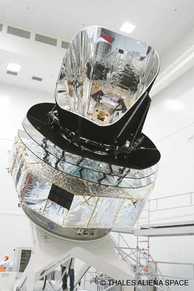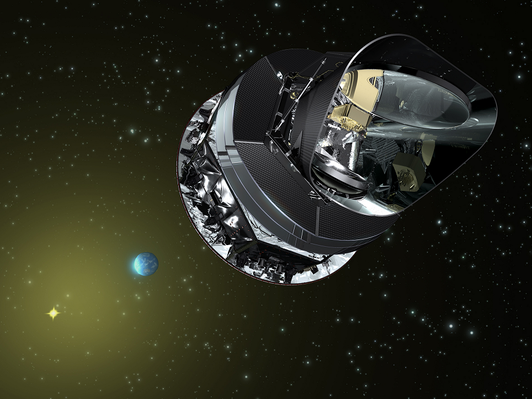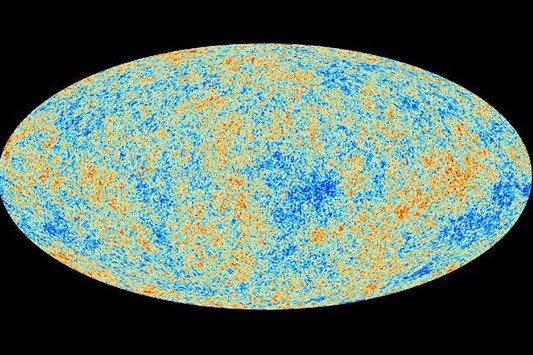
The PST was launched in May 2009 to take up station at the Earth/Sun L2 point, approximately 1 ½ million kilometres from Earth (see picture). This is an ideal ‘orbit’ for this type of mission with the Sun and Earth obscuring only a very small area of sky. Like the COBE and WMAP satellites before it, the PST was designed to measure the Cosmic Background Radiation (CBR) which is the remnants of the light emitted by the Big Bang. To unwrap this a little, currently scientists have adopted what they call the ‘standard model’ of the origin of our Universe. Basically this comprises a Big Bang event at time-zero, when space, time, and all the energy and matter we now observe in the Universe were created spontaneously. This was followed by a period of ‘inflation’ in which the resulting embryonic universe expanded at a very rapid rate. Clearly at this stage the Universe comprised a very hot and dense ‘fireball’, which was opaque to the transmission of light. However, about 380,000 years after the initial event, matter and radiation ‘decoupled’ and the light we now see as the CBR was free to propagate throughout the Universe. Because of the huge degree of expansion of the Universe since, the wavelength of this 'first light' has been stretched so that we now see it as long wavelength microwave radiation with a very low temperature – about 2.7 degrees above absolute zero (absolute zero on the Celsius scale is around -273 degrees). Although this story of the origin of the Universe may seem fanciful to you (sometimes I find it hard to believe myself), nevertheless the very precise measurements of Planck has served to increase confidence that indeed the standard model is correct!
What the Planck Space Telescope has produced (see picture) is a map of the sky showing very minute variations in the temperature of the background radiation. These fluctuations in the ancient light produced 380,000 years after time-zero reflect variations in density that existed at that time. And it is these variations that seeded the formation of the first stars and galaxies. The detailed analysis of the Planck data has provided refined estimates of the large-scale characteristics of the Universe, which can be summarised as follows.
Age of the Universe: 13.82 billion years – a little older than previously thought.
Fraction of ‘normal matter’ (matter composed of particles such as protons, neutrons, electrons, etc.): 4.9 %.
Fraction of dark matter (matter of unknown composition which we can’t see, but we know it has to be there because the dynamics of galaxies, for example, cannot be explained by just taking account of the visible matter): 26.8 %.
Fraction of dark energy (the mysterious agent that is causing the expansion of the Universe to accelerate): 68.3%.
Hubble’s constant: 67.15 km/sec per megaparsec (where a megaparsec is about 3.2 million light years).
This parameter quantifies the expansion rate of the Universe. It means that galaxies 3.2 million light years away from us will appear to be receding, due to the universal expansion, at a speed of 67.15 km/sec. Galaxies at twice this distance will be moving away at twice this speed, and so on.
Of course, not everything that the Planck Space Telescope is telling us is straightforward. There are various mysterious anomalies in the data, and the hope is that these will lead to ‘new physics’ or to a modified understanding of the origins of our amazing Universe. It is also quite humbling to realise that we have a reasonable understanding of the composition of only about 5% of the Universe, and currently we really don’t have a inkling about the other 95%! (See related post about the ESA Euclid project).


 RSS Feed
RSS Feed
